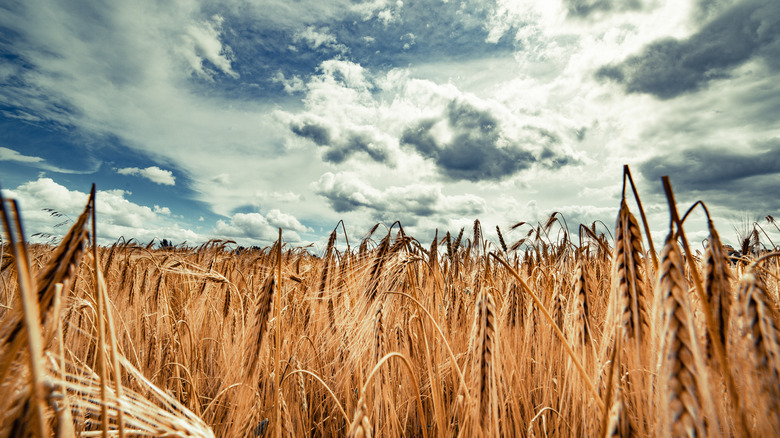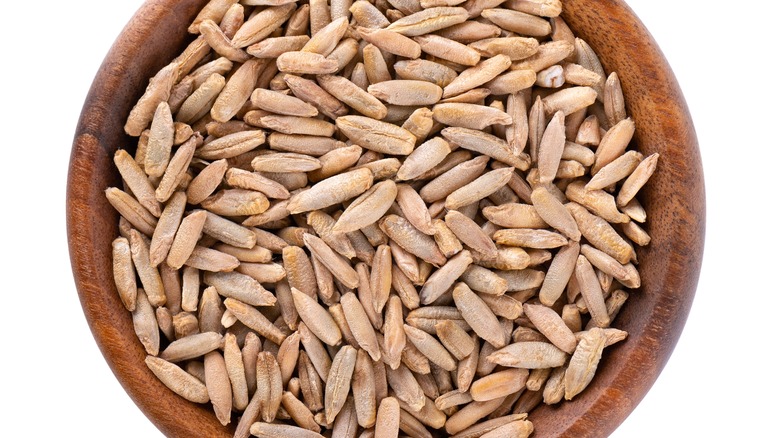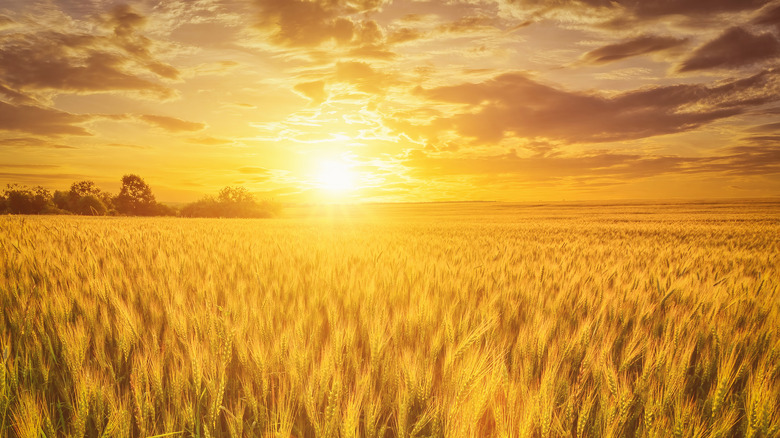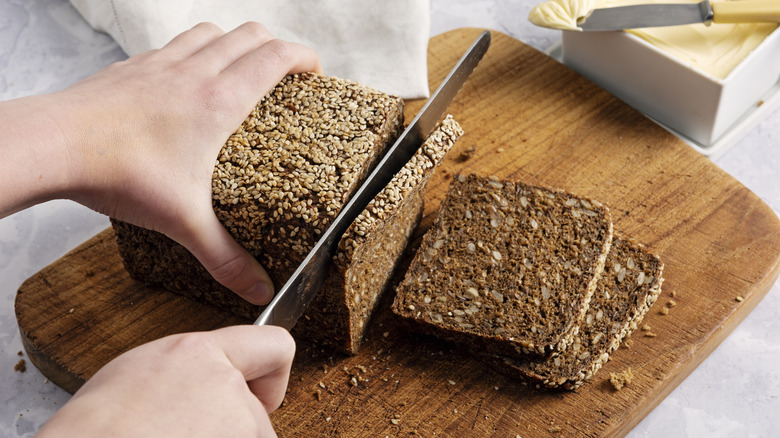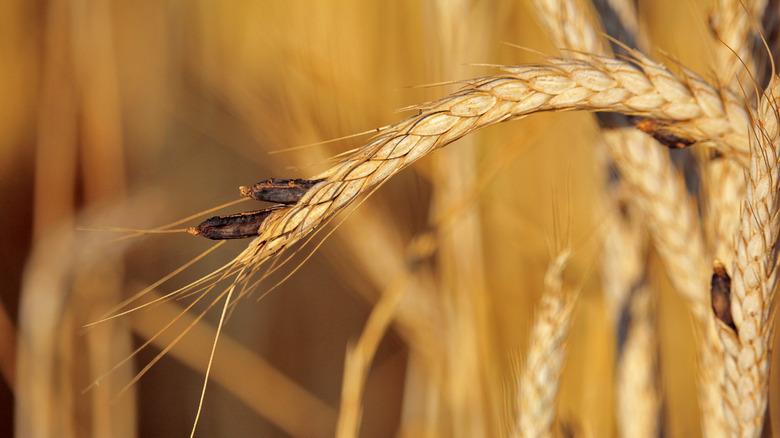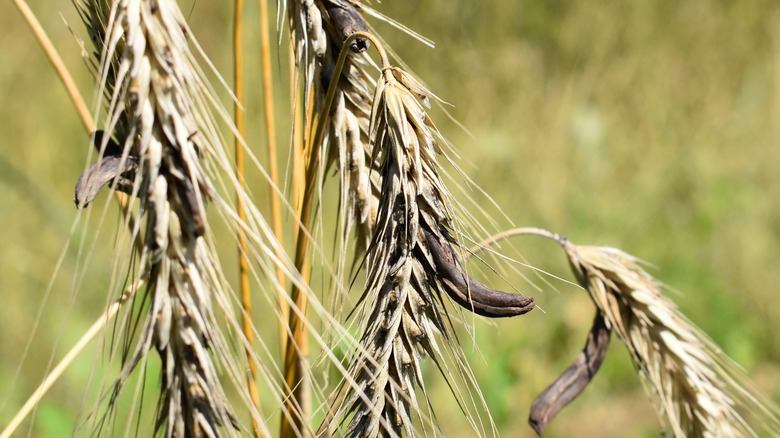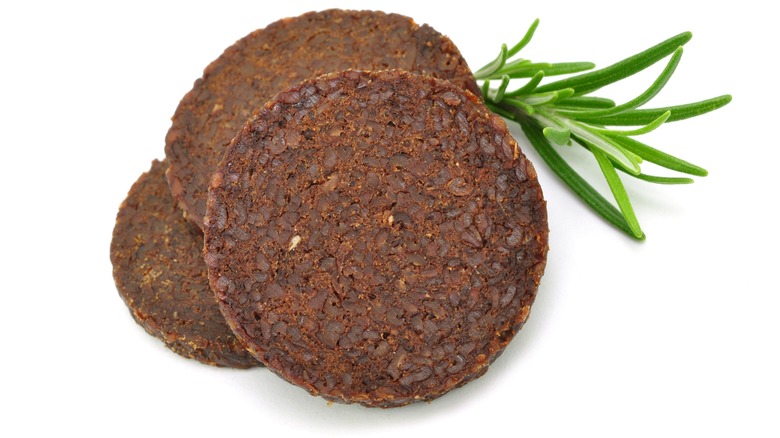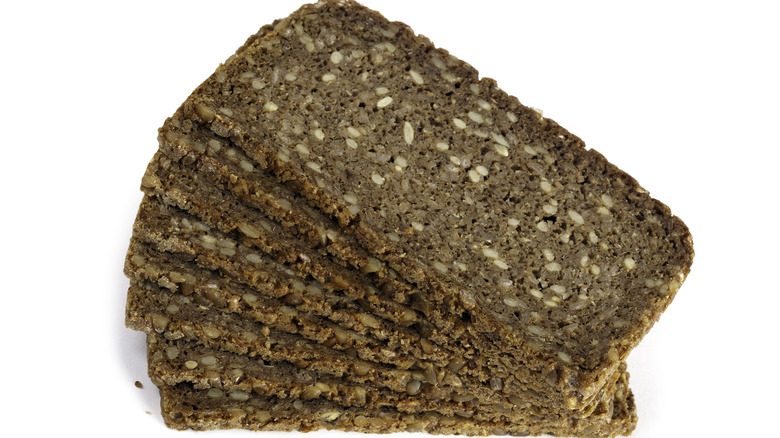10 Things You Didn't Know About Rye, The World's Most Underrated Grain
Rye is one of those unsung ingredients everyone's heard of but rarely notices. Sure, you expect your Reuben sandwich or patty melt to be served on rye toast, and if you're a craft beer or cocktail lover, you've probably seen or even tasted beers and whiskeys featuring rye. Unless your roots are in northern or eastern Europe, though, it's unlikely that rye is the default bread choice in your home. It's even less likely that you've ever purchased a bag of rye flour yourself unless you're a serious home baker.
Despite its lack of buzz, however, rye has played a critical role in the world's food cultures. While it initially grew unnoticed as a weed in ancient barley and wheat crops, farmers soon realized it was not only a dependable food source but easy to grow, even in places where other grains fail to thrive. This was both a blessing and a curse for the rye's reputation: While its hardiness and easy availability made it a staple grain in Russia, Poland, and other regions with harsh climates, it also gave rye a dowdy reputation as food for the poor. As a result, food snobs dismissed the hearty rye breads of these regions as unrefined and inferior to more delicate white wheat breads. This is not only classist but a clear case of comparing apples to oranges: Rye is delicious in its own right, and has an equally rich history to boot.
Rye was first domesticated in the Middle East
While hearty rye breads are closely associated with the cold-weather cuisines of Eastern and Northern Europe, rye was actually first domesticated in a far sunnier locale: the Euphrates River valley in present-day Syria. Domestic rye is thought to have emerged there between 10000 B.C. and 6600 B.C. before spreading to present-day Turkey around 6600 B.C. Meanwhile, wild rye seeds inadvertently mixed with other grains made their way to central Europe and quickly took root. Because the hardy grain was able to grow easily in areas where other grains struggled, European farmers came to embrace it and decided to cultivate it intentionally. Thus, the domestication of rye in Europe occurred independently of its domestication in the Middle East.
While the cuisines of Turkey and the Middle East are not known for their rye dishes, the region still continues to cultivate significant quantities of the grain. In 2014–2015, for example, Turkey, grew 350,000 tons of rye, while the U.S. grew only 292,000 tons.
Rye is valued for much more than its grain
The domestication of rye is thought to have come about as a happy accident. Wild rye grew easily among older food crops such as wheat and barley and was initially ignored by farmers. But on occasion, after a poor growing season, the hardy rye grasses were the only grains left standing. Since they closely resembled wheat, farmers decided to harvest and make use of them.
Once they did, they discovered the entire plant to be endlessly useful. Not only did it grow faster than wheat, but it was found to be resilient enough to withstand flooding, extreme cold, and drought conditions. In addition, the grain was not only nourishing and affordable food for people but also for livestock (who could also eat the rest of the plant). The straw made a great material for thatched roofs, and the plant itself made a great cover crop, since its deep roots enhance soil health, prevent soil erosion, and help prevent weed growth. Even today, sustainability-minded farmers turn to rye as a cover crop to enable them to maintain their crops without herbicides.
Here's how rye flour differs from wheat flour
Once early farmers discovered that rye was an easy crop to grow, they had to think of ways to make use of the grain, and from this came a long tradition of baking with rye. Early bakers, just like bakers today, discovered that working with rye and working with wheat are quite different experiences.
It's no coincidence that rye breads are almost always denser than wheat breads. This is because rye — and thus rye flour — has less gluten than wheat, meaning that rye doughs are less elastic than wheat doughs and less able to generate the airy texture found in some wheat bread. (While rye is lower in gluten than wheat, it's still not a completely gluten-free option.) Rye flour also absorbs more liquid than wheat flour. While this enables baked goods made with rye to stay fresher longer, it also raises the risk of baked goods with a gummy texture if too much liquid is added. Thus, most rye breads include some wheat flour to ensure a pleasant texture. Most importantly, rye has a distinctive, malty flavor that marries well with warming flavors such as cinnamon, chocolate, and ginger.
A fungus associated with rye is used to manufacture LSD
Rye became a beloved staple in central and northern Europe because it's such an easily accessible and flavorful foodstuff. Unfortunately, however, it's also an easily accessible foodstuff to an unwelcome organism: the toxic fungus C. purpurea, which causes the plant disease ergot. This fungal disease causes swollen black growths to emerge among the grains, a condition that's not only ugly but potentially deadly to anyone who consumes ergot-infected rye — the toxins in the fungus can cause hallucinations, convulsions, gangrene, and potentially death.
Creative people have always been able to make lemonade when life hands them lemons, and early 20th-century pharmacists and chemists began exploring ways to leverage the compounds in ergot-causing fungi for medicinal purposes. One of these was Swiss chemist Albert Hoffman, who, in 1938, formulated a derivative from the fungus he called lysergic acid, or LSD. He only discovered its true hallucinogenic impact after accidentally dripping a bit of it onto his skin. Assuming this quantity was too small to have any effect, he ignored it, only to fall into a hallucinogenic trance several hours later. Intrigued, he repeated the experiment and birthed a staple of 1960s drug culture.
Infected rye was also thought to have triggered the Salem Witch Trials
Poisoning from ergot-infected rye is no joke. The symptoms — convulsions, spasms, hallucination, severe intestinal cramps, and worse — are not only frightening but potentially deadly. What made ergotism even more terrifying before the era of modern medicine was that no one understood what caused it, and severe outbreaks were common — in 1418, for example, over 50,000 people in Paris died within a single month from ergot poisoning.
All of this meant that people struggled to understand why those around them were contracting these mysterious symptoms as they sought to protect themselves from a similar fate. In 1692, in Salem, Massachusetts, two young girls experienced mysterious convulsions, and several other villagers began experiencing similar symptoms. The town's doctor reached what he felt was the most reasonable diagnosis: witchcraft. This sent the townspeople into a frenzy of witch-hunting, and by the middle of 1969, 25 people had been executed or imprisoned for witchcraft in the now-notorious Salem witch trials. Today, many scholars blame ergot, not witchcraft, for the erratic behaviors triggering the frenzy. The symptoms described among the "bewitched" were consistent with ergotism, and the hard winter and damp spring in 1691 — when the rye consumed at the time of the incidents would have been planted — were optimal conditions for the development of ergot.
What exactly is pumpernickel?
Most of us recognize pumpernickel as a dark bread with rye in it but would be hard-pressed to describe exactly what sets it apart from other varieties of rye bread. Pumpernickel, it turns out, is both the name of the bread and its defining ingredient, a coarse, whole-grain rye flour or meal. In Germany, where pumpernickel originated, it is typically made without wheat flour, leavened with a sourdough starter, and baked at low heat, giving the bread a dark color and moist, dense texture. In the U.S., pumpernickel is often made with both wheat flour and regular rye flour and leavened with yeast, resulting in a lighter bread.
Several legends attempt to account for the name of the bread. One story attributes the name to Napoleon, who, upon tasting the bread in Germany, declared it was only good enough for his horse, Nicol ("C'est bon pour Nicol!"). However, historians have noted that the "good for Nicol" story had been documented years before Napoleon's arrival and attributed to another disgruntled French diner. The actual history of the name, however, is even stranger. Pumpernickel comes from "pumpern," the German word for fart, and Nickel, a German nickname for the devil — hence, devil's farts. The dense bread earned its name from unhappy German soldiers in the Thirty Years' War, who had to endure a diet of low-quality, hard-to-digest pumpernickel. While the quality and flavor of the bread improved over the years, the name stuck.
The oldest brand of whiskey in the U.S. was made from rye
One reason why rye is considered such a valuable crop is that it's not just easy to grow and a great source of food, but a great source of fermentable grain for distilled beverages such as vodka and whiskey. Rye whiskey — defined as whiskey with a mash bill of over 50% rye — has a long history in the U.S. Indeed, the first branded whiskey in the U.S., Old Overholt, was a rye whiskey made in Pennsylvania, and it established Pennsylvania's reputation among serious whiskey geeks as the birthplace of rye whiskey. This, by extension, established the reputation of rye whiskey itself as a distinctly American creation.
Historians, however, beg to differ. Some cocktail historians argue that the beverage has a distinctly German origin, noting that the earliest written record about making rye whiskey was correspondence about a German recipe. The fact that Henry Oberholtzer, the founder of Old Overholt, was himself of German descent with family roots in a region of Germany known for distilling rye suggests that his recipe has older roots than many fans think.
When brewed in beer, rye adds a peppery note
While beer is typically made from barley, other grains, including wheat, oats, and rye are also used. Each contributes a unique flavor and mouthfeel. Rye was, as expected, historically used in regions where the grain was routinely grown. A historic example of a rye-forward beer is Roggenbier, an old German style that contained at least 50% rye, a low hop bill, and hefeweizen yeast. Another distinct, rye-based beer is sahti, a Finnish style that features both rye and barley, along with whole boughs of juniper and its berries, which lend a distinctive taste.
What all rye beers have in common is a distinctly spicy, peppery note. In addition, a significant proportion of rye can also give beer a reddish hue. Rye has become increasingly popular in craft beer in recent years, and its distinctive flavor works well with a range of beer styles, from lagers to stouts. However, rye is an especially popular addition to India pale ales.
With the rising popularity of ancient grains, rye bread is having a moment
Dense, chewy rye traditional bread, with its aggressively malty flavor and often a noticeable sourness from its sourdough leavening, was once seen in some circles as dowdy and déclassé compared to lighter, more delicate white loaves. This meant that bakers who wanted to be taken seriously in the 1970s and 1980s abandoned traditional rye loaves for more fashionable baguettes and brioches.
But rye never fully went away, and Scandinavians continued to enjoy their traditional rye breads, the only ones they felt could provide an adequately flavorful and sturdy base for traditional sandwich fillings such as cured salmon and smoked cheese. And, as interest in other ancient grains grew among the world's diners, interest in traditional rye breads was rekindled, along with regional pride among Scandinavian cooks and diners for their traditional cuisine. U.S. cooks have embraced traditional rye breads, as well, producing their own old-school artisanal loaves and even incorporating leftover rye bread into cocktails.
Leftover rye bread can be upcycled into a layer cake
Bread is a staple food for many of the world's cultures, so much so that it has not just nutritional but also spiritual significance. This can be seen in a quote painted on the wall in the offices of the Berlin bakers' guild: "He who dishonors bread dishonors life itself" (from the New York Times). For those who take bread seriously, this means it's not to be wasted. But, it's almost inevitable in any bread-loving cuisine that bits and pieces of old bread will end up uneaten, often becoming too stale to be appealing on their own. This is why so many now-beloved dishes, from French toast to bread pudding to the Italian bread salad panzanella, evolved to showcase — and honor — leftover bread.
While hearty rye breads might be a problematic match for a standard bread pudding recipe, cooks in rye-loving regions have devised their own original recipes to ensure no rye bread goes to waste. A great example of this is Danish brødtorte, a layer cake in which pulverized rye bread crumbs and hazelnuts stand in for flour. The cake itself is flavored with cocoa and molasses, both of which play up the toasty notes of traditional rye bread, and the cake's two layers are filled with whipped cream and blackberry jam. It's a creative way to use up old rye that showcases, rather than obscures, its distinctive flavors.

